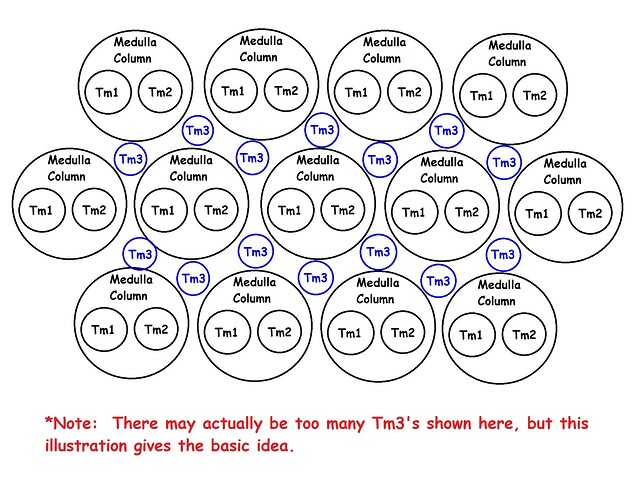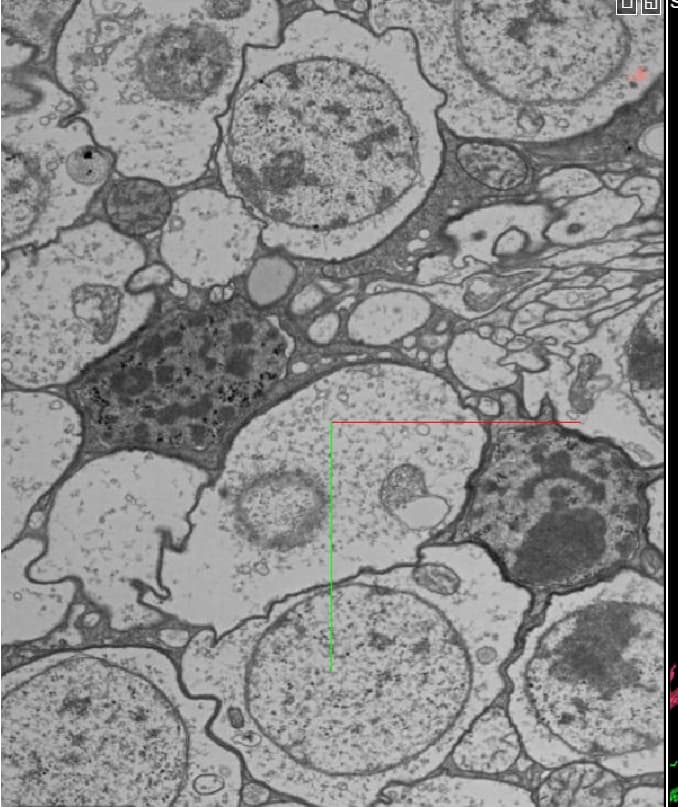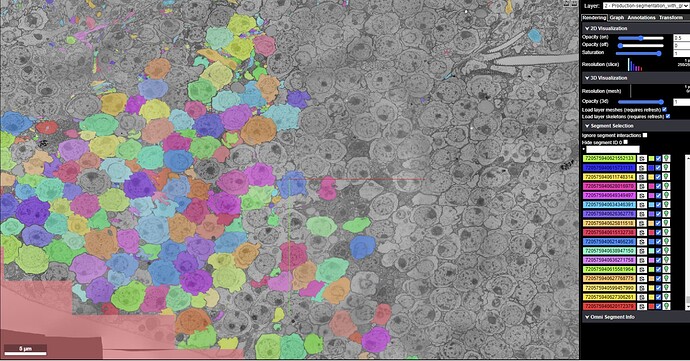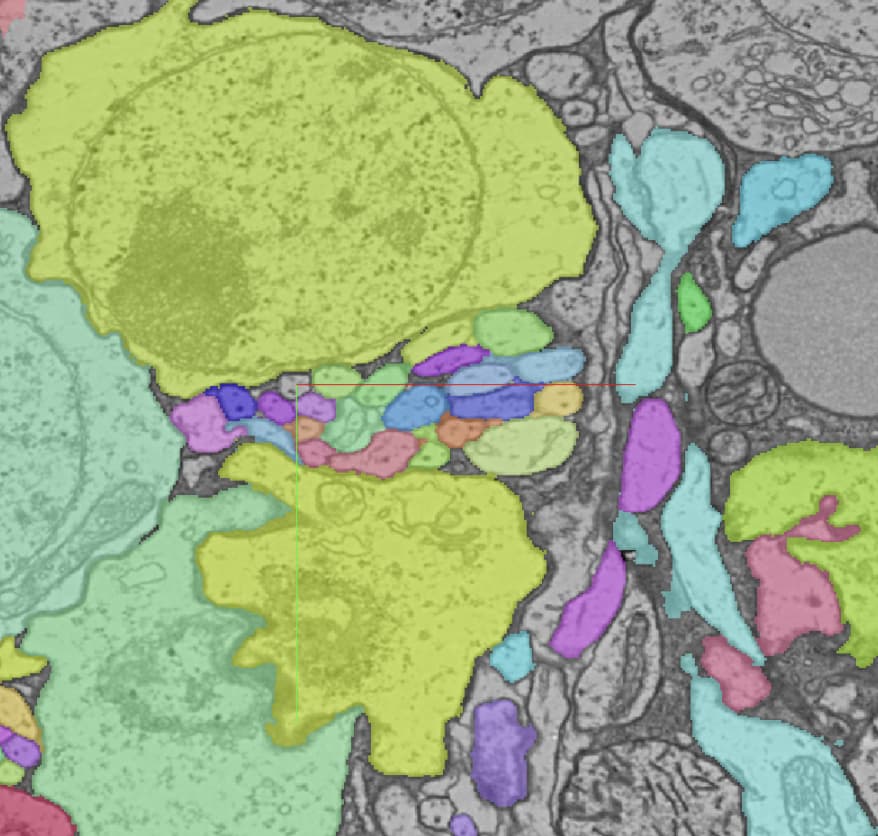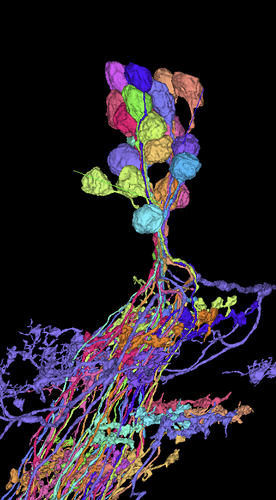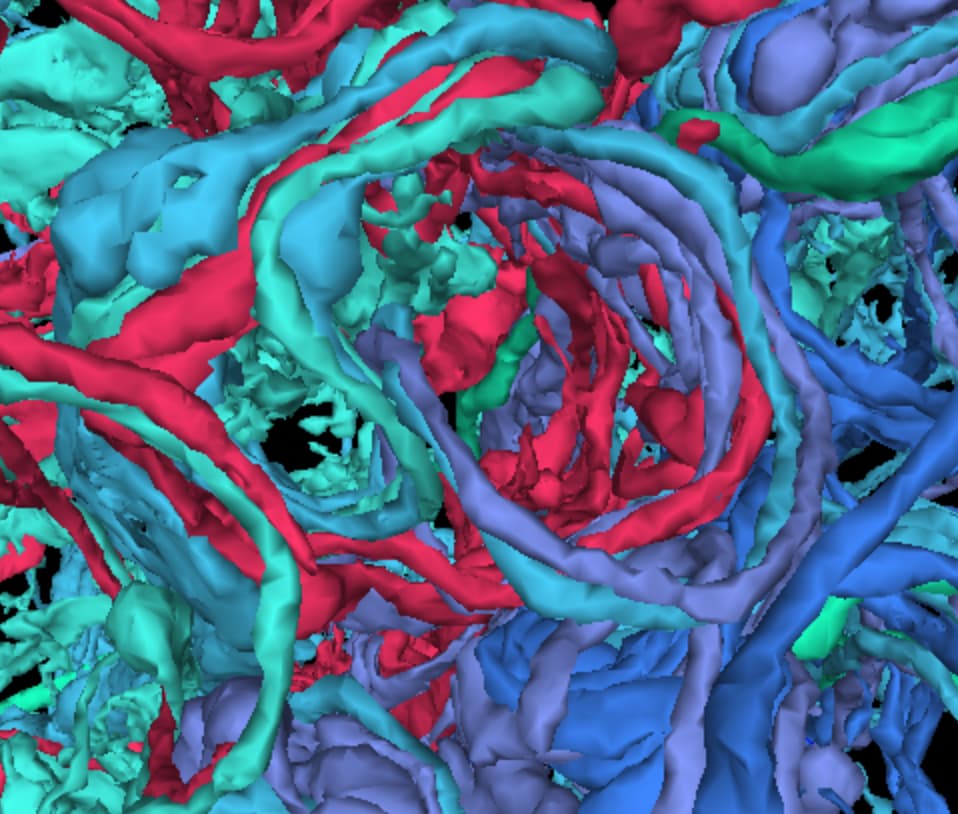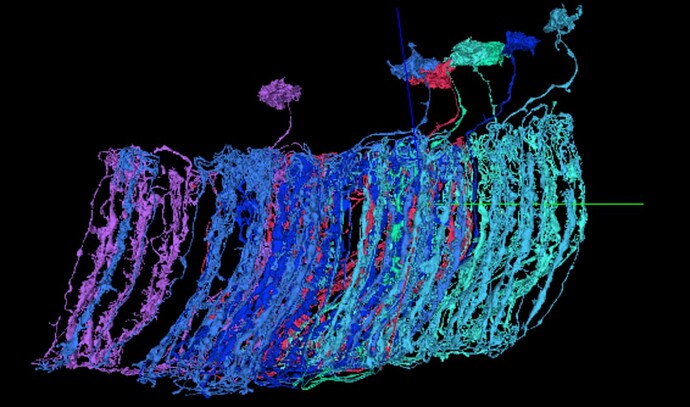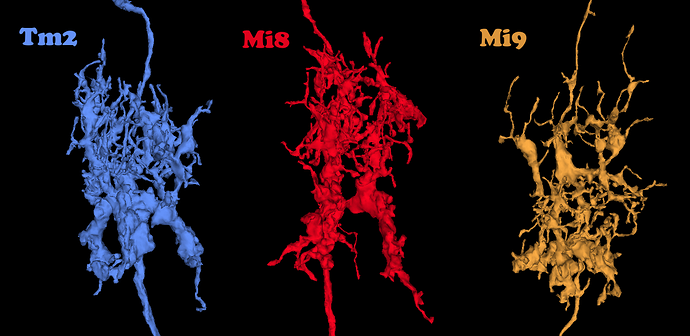@Krzysztof_Kruk @AzureJay Nice work, KK and AJ! 
On moving forward, with Tm/TmY cells…
My primary goal is, of course, to proofread and complete the cells of the optic lobe. As such, my primary interest in cell type classifications is to aid in that goal (i.e. if you know what type of cell it is, then you have a pretty good idea of what the cell “ought” to look like, when complete). At some point though, assigning cells to further and further subdivided categories becomes a purely academic exercise, from the standpoint of proofreading. As an example, consider the distinction between the Tm1 cell, and its Tm1a variant. In my experience, the examples of Tm1a that I have found, have always been in place of the Tm1 cell, in a particular medulla column, rather than being an additional cell in the column. From the standpoint of proofreading, and useful structural patterns to aid in proofreading, it makes no difference to me whether it is a typical Tm1, or some slight variation of the Tm1 theme…it is sufficient for proofreading purposes to simply know that every medulla column has a Tm1-ish cell, with a proximal medulla arbor somewhere near the distal end of the Mi1 axonal arbor, and an axon extending somewhat superficially into the lobula, etc.
With the above in mind, I would personally like to organzie the Transmedullary cells into two broad categories - those that are coaxial with the medulla columns, and those that are interstitial to the medulla columns. The figure below illustrates what I mean by this distinction. In my experience, Tm1 and Tm2 can always be found within, and coaxial with, a medulla column. The Tm3 cell, on the other hand, can always be found in the interstitial space between medulla columns. I would then like to come up with a count of all coaxial Tm/TmY cells, in a typical medulla column, and a count of all interstitial Tm/TmY cells, at a typical interstitial location…and then compare those totals to the Fischbach classification scheme. Why? Because Fischbach acknowledges in the paper that, for example, Tm8 and Tm22 may actually just be slight variations of the same cell type, and my experience suggests that Tm5 may also be yet another variation of that same cell type. There are other examples, but this paragraph provides the basic idea of what I am looking for.
I am not asking the community to do anything here, I will pursue this avenue of exploration myself (although anyone is more than welcome to help, if they like)…just providing an update on where I am at, regarding the question of identifying Tm/TmY cells.
Cheers, all.
![]()
![]()
![]()
